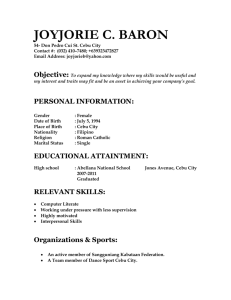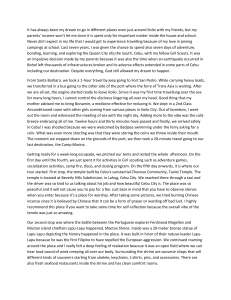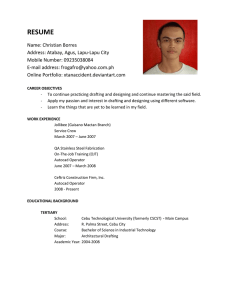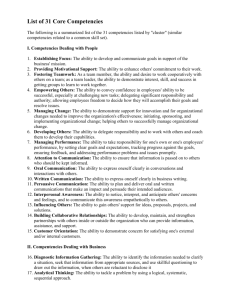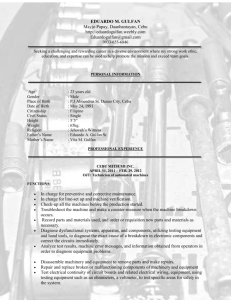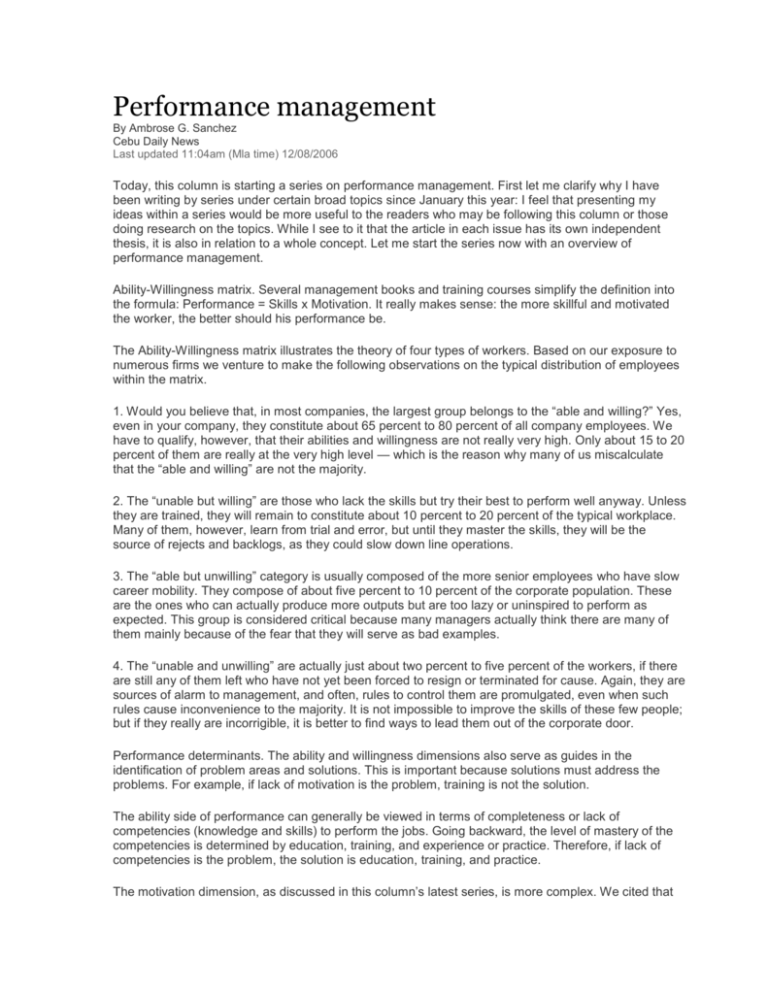
Performance management
By Ambrose G. Sanchez
Cebu Daily News
Last updated 11:04am (Mla time) 12/08/2006
Today, this column is starting a series on performance management. First let me clarify why I have
been writing by series under certain broad topics since January this year: I feel that presenting my
ideas within a series would be more useful to the readers who may be following this column or those
doing research on the topics. While I see to it that the article in each issue has its own independent
thesis, it is also in relation to a whole concept. Let me start the series now with an overview of
performance management.
Ability-Willingness matrix. Several management books and training courses simplify the definition into
the formula: Performance = Skills x Motivation. It really makes sense: the more skillful and motivated
the worker, the better should his performance be.
The Ability-Willingness matrix illustrates the theory of four types of workers. Based on our exposure to
numerous firms we venture to make the following observations on the typical distribution of employees
within the matrix.
1. Would you believe that, in most companies, the largest group belongs to the “able and willing?” Yes,
even in your company, they constitute about 65 percent to 80 percent of all company employees. We
have to qualify, however, that their abilities and willingness are not really very high. Only about 15 to 20
percent of them are really at the very high level — which is the reason why many of us miscalculate
that the “able and willing” are not the majority.
2. The “unable but willing” are those who lack the skills but try their best to perform well anyway. Unless
they are trained, they will remain to constitute about 10 percent to 20 percent of the typical workplace.
Many of them, however, learn from trial and error, but until they master the skills, they will be the
source of rejects and backlogs, as they could slow down line operations.
3. The “able but unwilling” category is usually composed of the more senior employees who have slow
career mobility. They compose of about five percent to 10 percent of the corporate population. These
are the ones who can actually produce more outputs but are too lazy or uninspired to perform as
expected. This group is considered critical because many managers actually think there are many of
them mainly because of the fear that they will serve as bad examples.
4. The “unable and unwilling” are actually just about two percent to five percent of the workers, if there
are still any of them left who have not yet been forced to resign or terminated for cause. Again, they are
sources of alarm to management, and often, rules to control them are promulgated, even when such
rules cause inconvenience to the majority. It is not impossible to improve the skills of these few people;
but if they really are incorrigible, it is better to find ways to lead them out of the corporate door.
Performance determinants. The ability and willingness dimensions also serve as guides in the
identification of problem areas and solutions. This is important because solutions must address the
problems. For example, if lack of motivation is the problem, training is not the solution.
The ability side of performance can generally be viewed in terms of completeness or lack of
competencies (knowledge and skills) to perform the jobs. Going backward, the level of mastery of the
competencies is determined by education, training, and experience or practice. Therefore, if lack of
competencies is the problem, the solution is education, training, and practice.
The motivation dimension, as discussed in this column’s latest series, is more complex. We cited that
the installation of the right organizational systems is necessary for extrinsic or external motivation. This
is on the transactional motivation (rewards and sanctions) aspect of performance management. We
also emphasized that intrinsic needs should also be satisfied through transformational motivation by the
setting of super ordinate group goals that will also satisfy the self-actualization needs of employees.
Given this overview, it should now be clear that solutions must be planned to address specific problem
areas, rather than expect certain solutions — like salary increase — to solve all performance related
problems. The succeeding discussions in this series will address issues in this regard.
To subscribe to the Cebu Daily News newspaper, call +63 2 (032) 233-6046 for Metro Manila and Metro Cebu or
email your subscription request here.
Copyright 2007 Cebu Daily News. All rights reserved. This material may not be published, broadcast, rewritten or
redistributed.
For more articles on performance management, please email:
ptrfred101@yahoo.com.ph, or reply in website:
www.1on1marketingtraininguae.weebly.com



